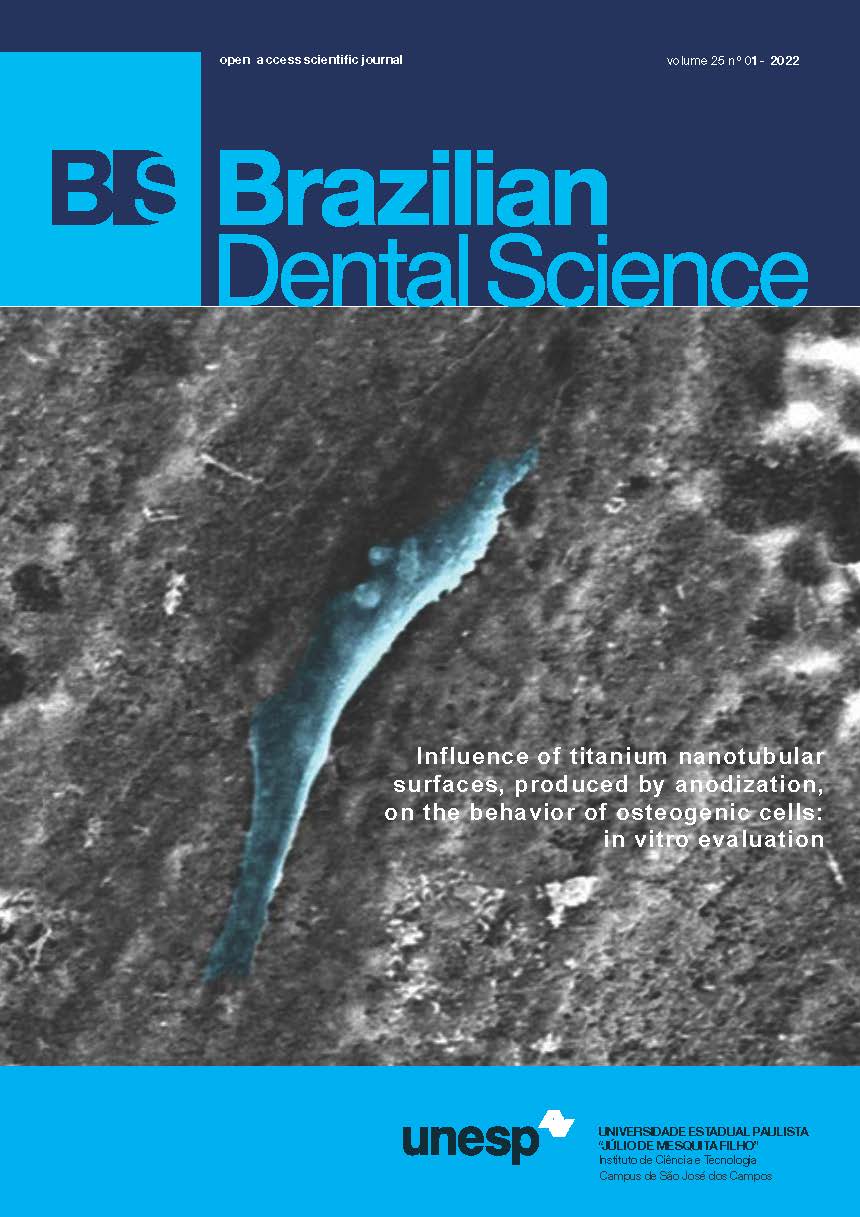Effect of MDP concentration and addition of iodonium salt on the dentin bond strength of experimental adhesives
DOI:
https://doi.org/10.4322/bds.2022.e2933Abstract
Objective: The aim was to evaluate the bond strength of six experimental adhesives containing binary or ternary
photoinitiator systems, associated with three different MDP concentrations (0-12wt%) after 12 months of
storage in distilled water. Material and Methods: Experimental adhesives were prepared with: bis-GMA, UDMA,
bis-EMA, TEGDMA, HEMA, BHT, and ethanol, containing binary (CQ/amine) or ternary (CQ/amine/DPIHFP
(diphenyliodonium hexafluorophosphate) – 0.5wt%) photoinitiator systems. It was added to this composition
0wt%, 6wt%, or 12wt% of MDP. The adhesive systems were applied following the etch-and-rinse protocol.
Transparent cylindrical molds were placed on the hybridized dentin, filled with composite resin and light-cured.
The specimens were stored in distilled water at 37oC for 24h or 12 months and submitted to a microshear bond
strength test (n=6). Data were analyzed by three-way ANOVA and Tukey’s test (a =5%). Results: For the binary
system, after 12 months of storage, all bond strength values were similar. Regarding bond strength degradation
over time, 6wt% and 12wt% MDP formulations showed more stable bond strength than 0wt% MDP. For the ternary
system, all formulations (0wt%, 6wt% and 12wt%) showed stable bond strength over time. Conclusion: For the
binary photoinitiator system, the 6wt% and 12wt% MDP concentrations were able to keep bond strength stable
over time, while for the ternary system, bond strength stability was achieved regardless the MDP concentration.
KEYWORDS
Dental bonding; Dental photoinitiators; Dentin-bonding agents; MDP.
Downloads
Downloads
Published
Versions
- 2022-03-29 (2)
- 2022-03-17 (1)
How to Cite
Issue
Section
License
Brazilian Dental Science uses the Creative Commons (CC-BY 4.0) license, thus preserving the integrity of articles in an open access environment. The journal allows the author to retain publishing rights without restrictions.
=================




























